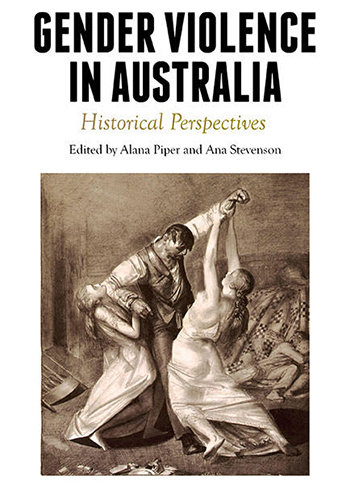“Gender violence has gained renewed public visibility in South Africa over the past weeks due to the horrific murder of undergraduate womxn (the term/spelling used by activists during the recent marches) from the University of Cape Town and the University of the Western Cape. These tragedies followed the longer history of high-profile cases of gender-based violence, where violated young womxn become the focus of intense media analysis – sometimes sympathetic, but often characterised by victim blaming.”
These are the words of
Dr Ana Stevenson, postdoctoral research fellow in the
International Studies Group in the Faculty of the Humanities at the University of the Free State (UFS).
She believes that most media commentary and policymaking are rarely contextualised in terms of the long history of gender violence. A recent edited collection,
Gender Violence in Australia: Historical Perspectives (Monash University Publishing, 2019), which she co-edited with her colleague, Dr Alana Piper (University of Technology Sydney), seeks to bring historical context to contemporary discussions about gender violence.
Dr Stevenson, an Australian historian of social movements, joined the International Studies Group in 2016. With her research, she examines the lives and writings of activist women in feminist and anti-racist social movements in South Africa as well as in Australia and the United States.
She considers herself fortunate to have been offered the opportunity to live and work in South Africa during this era of student activism on campuses across the country.
Words alone are not enoughOther South African scholars have turned their attention to gender violence in recent years. Rape and other forms of sexual violence are chronically underreported in South Africa, a problem that also exists in other national contexts. Victims simply do not feel safe enough to report their experiences to the police, says
Prof Pumla Dineo Gqola, author of
Rape: A South African Nightmare (Jacana Media, 2015).
Dr Stevenson adds: “Despite public outcry, the emergence of new victims suggests that the cultural shifts which are needed to transform the violent behaviours that disproportionately affect the lives of womxn, have sadly not been achieved. The marches in solidarity across many university campuses, including at the UFS, are certainly a step in the right direction, as is the UFS’s renewed
commitment to eradicating all forms of gender-based violence.”
However, according to her edited collection, words alone are not enough.
She believes that greater public awareness can only help to address the problem to a degree. “What is needed in addition to initiatives that seek to effect cultural and behavioural change among perpetrators, is ongoing and dedicated funding for rape crisis centres and other support services for those who encounter gender violence,” Dr Stevenson says.
 Taking a stand against complacencyGender Violence in Australia
Taking a stand against complacencyGender Violence in Australia indicates exactly where violent behaviours come from and seeks to illustrate how they have been rationalised over time. “It is important to recognise that change has only occurred because of the willingness of some, most especially feminist activists, to take a stand against community complacency. We hope that, in identifying these patterns over a period of more than 150 years, our collection will be useful for policymakers, politicians, and the media, as histories of violence are intimately connected to understanding how gender violence operates in the present.”
“Our collection hopes to make the important first steps in assembling a history that builds on the work of feminist historians, whose earlier research about gender violence in Australia examined the phenomenon in various contexts. In doing so, we bring together the analysis of domestic, family, sexual, institutional, economic, psychological, structural, and state violence to identify the important links between historical legacies and the contemporary moment. Making the connections between past and present explicit, offers the opportunity to track the changes and continuities that shape our understanding of gender violence today.”
Dr Stevenson strongly believes that womxn are not to blame, and that they must keep raising their voices to make themselves heard. She supports Prof Gqola, who said: “A future free of rape and violence is one we deserve, and one we must create.”
• Womxn: According to the Urban Dictionary, it is a spelling of ‘women’ which is a more inclusive, progressive term that not only sheds light on the prejudice, discrimination, and institutional barriers womxn have faced, but to also show that womxn are not the extension of men but their own free and separate entities.